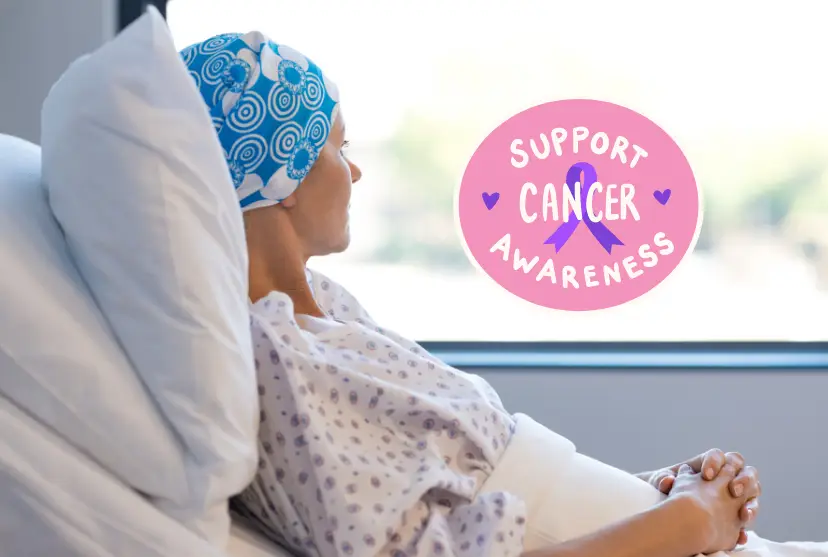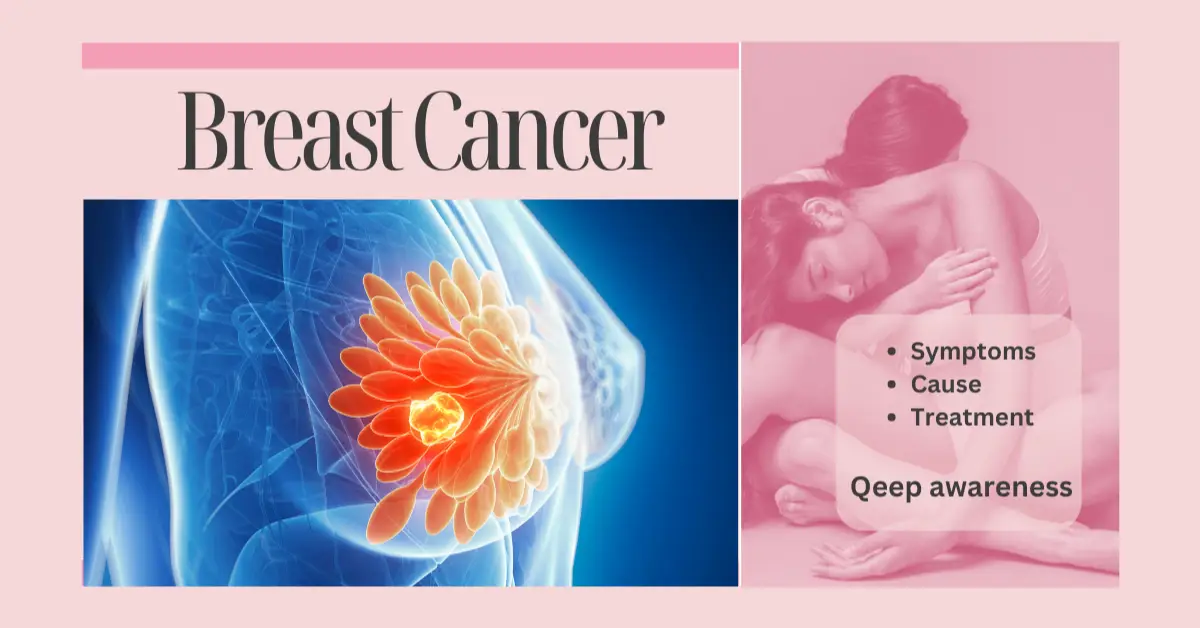Breast Cancer Overview
Breast cancer stands as a formidable health challenge, affecting numerous individuals worldwide, with profound impacts on patients and their families. At our organization, we prioritize the dissemination of precise and comprehensive information about B. cancer to empower individuals to make well-informed decisions about their health. In this exhaustive guide, we delve into various facets of cancer, encompassing symptoms, underlying causes, diverse types, awareness initiatives, and treatment modalities.
Contents
Breast Cancer
Breast cancer is a devastating illness characterized by the uncontrolled growth of cells in the breast tissue. While it predominantly impacts women, it can also affect men. Detecting it early and seeking prompt treatment is crucial for enhancing survival chances and minimizing potential complications. Awareness about the disease, regular screenings, and access to advanced treatment options play pivotal roles in combating this formidable adversary and preserving health and well-being.
- Devastating Disease: Breast cancer is an abnormal growth of cells in the breast.
- Impact: Primarily affecting women, but men can also develop it.
- Early Detection: Finding breast cancer early is crucial for successful treatment.
- Survival and Complications: Early detection improves survival rates and reduces complications.
- Combating the Disease: Awareness, regular screenings, and advanced treatments are key to fighting breast cancer.
Symptoms of Breast Cancer
Understanding the telltale signs of breast cancer remains paramount for early detection and effective intervention. Some prominent symptoms to be aware of include:
- Presence of a Lump or Mass: Detection of an abnormal lump or mass in the breast or underarm region.
- Alterations in Breast Appearance: Notable changes in breast size, shape, or texture.
- Shape or Size Changes: Changes in the size or shape of your breast.
- Changes in Nipple Characteristics: Observable changes such as inversion or discharge from the nipple.
- Skin Abnormalities: Development of redness, dimpling, or puckering of the breast skin.
Remember: These changes can be caused by other conditions besides cancer. It’s always best to check with your doctor if you notice anything unusual.
Causes of Breast Cancer
Though the precise etiology of breast cancer remains elusive, a multitude of factors have been implicated in elevating the risk of its occurrence. These factors include:
- Genetic Predisposition: Inherited mutations in genes such as BRCA1 and BRCA2.
- Hormonal Influences: Fluctuations in hormone levels, notably estrogen and progesterone.
- Lifestyle Choices: Factors such as obesity, excessive alcohol consumption, and sedentary behavior.
- Environmental Exposures: Exposure to carcinogenic agents like radiation or certain chemicals.
The Various Types of Breast Cancer
Breast cancer manifests in diverse forms, each distinguished by unique characteristics and necessitating tailored treatment approaches. Some notable types include:
- Ductal Carcinoma In Situ (DCIS): Early-stage cancer confined to the milk ducts.
- Invasive Ductal Carcinoma (IDC): Cancer that has invaded surrounding breast tissue.
- Invasive Lobular Carcinoma (ILC): Cancer originating in the lobules of the breast.
- Triple-negative B. Cancer (TNBC): Cancer lacking expression of estrogen, progesterone, and HER2 receptors.
Breast-Cancer Awareness
The promotion of breast cancer awareness serves as a crucial strategy in facilitating early detection and access to screening programs. Our commitment to raising awareness includes:

- Educational Initiatives: Disseminating information about B. cancer risk factors and the importance of regular screenings.
- Community Engagement: Hosting events to raise funds for research and provide support to individuals and families affected by this cancer.
- Support Networks: Establishing support groups and online resources to offer guidance and emotional support.
Breast Cancer Risk and How to Lower It
Non-modifiable factors (cannot be changed):
- Age: The risk of breast cancer is more common in older women.
- Family History: Having a close relative with breast cancer increases your risk.
- Inherited Genetic Changes: Mutations in genes like BRCA1 and BRCA2 can significantly increase risk.
Modifiable Factors (can be influenced):
- Weight: Maintaining a healthy weight can reduce risk.
- Physical Activity: Regular exercise can lower the risk of breast cancer.
- Alcohol Consumption: Limiting or avoiding alcohol intake can decrease risk.
- Hormone Replacement Therapy (HRT): Discuss potential risks and benefits with your doctor if considering HRT.
- Oral Contraceptives: Consult your doctor about the risks and benefits of birth control pills.
- Breastfeeding: Breastfeeding may offer some protection against breast cancer.
Overall Health:
- Healthy Lifestyle: A healthy diet, regular check-ups, and stress management can contribute to overall health and reduce cancer risk.
Treatment of Breast-Cancer
Treatment for cancer depends on factors such as the type and stage of cancer, as well as individual health considerations. Options may include:
- Surgery: Removing the cancerous tumor and surrounding tissue.
- Chemotherapy: Using drugs to kill cancer cells.
- Radiation Therapy: Targeting cancer cells with high-energy beams.
- Hormone Therapy: Blocking hormones that promote cancer growth.
- Targeted Therapy: Targeting specific molecules involved in cancer development.
A table summarizing cancer information:
| Type | Description | Causes | Treatment |
|---|---|---|---|
| Invasive Ductal Carcinoma (IDC) | Aggressive treatment includes chemotherapy, surgery, radiation, and targeted therapies. | Genetic mutations (BRCA1, BRCA2), hormonal factors (estrogen exposure), lifestyle (alcohol, obesity). | Surgery, chemotherapy, radiation therapy, hormonal therapy, biological therapy. |
| Lobular B. Cancer | Originates in milk-producing glands (lobules) and often spreads to nearby breast tissue. | Similar causes as IDC. | Similar treatments as IDC. |
| Ductal Carcinoma in Situ (DCIS) | Starts in milk ducts but doesn’t spread beyond them. | Similar causes as IDC. | Surgery, sometimes radiation therapy. |
| Triple-Negative B. Cancer (TNBC) | Aggressive and fast-spreading. | No specific hormone receptors (ER-, PR-, HER2-). | Combination of surgery, chemotherapy, and targeted therapies. |
| Inflammatory B. Cancer (IBC) | Rare, resembles a rash on the breast. | Not well understood; aggressive growth. | Surgery, radiation therapy, and sometimes chemotherapy. |
| Paget’s Disease of the Breast | Affects nipple skin, looks like a rash. | Uncertain cause; may be related to underlying ductal carcinoma. | Affects nipple skin, and looks like a rash. |
Remember, early awareness and personalized treatment are key in the fight against B. cancer. 🌸🎗️.
Conclusion
In conclusion, breast cancer remains a significant public health concern, but with increased awareness, early detection, and advancements in treatment, the prognosis for many patients continues to improve. It is essential for individuals to stay informed about B. Cancer symptoms, undergo regular screenings, and support initiatives aimed at raising awareness and funding research efforts.
FAQ’s,
Is breast cancer only prevalent in women?
While breast cancer is more commonly diagnosed in women, men can also develop the disease, although it is less common.
What are the common symptoms of breast cancer?
Common symptoms of cancer include the presence of a lump in the breast or underarm, changes in breast size or shape, nipple discharge or inversion, and skin changes such as redness or dimpling.
What are the causes of breast cancer?
Several factors may contribute to the development of cancer, including genetic predisposition, hormonal influences, lifestyle choices, and environmental exposures.
How is breast cancer treated?
Treatment for this cancer may include surgery, chemotherapy, radiation therapy, hormone therapy, and targeted therapy, depending on the type and stage of cancer.


What i do not understood is in truth how you are not actually a lot more smartly-liked than you may be now. You are very intelligent. You realize therefore significantly in the case of this topic, produced me individually imagine it from numerous numerous angles. Its like men and women don’t seem to be fascinated until it is one thing to do with Woman gaga! Your own stuffs nice. All the time care for it up!